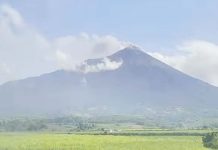 AMONG the significant contributors to the boost the country’s economy is the fruit industry, where a rich assortment of tropical fruits consisting of more than 20 different species is cultivated in the different regions.
AMONG the significant contributors to the boost the country’s economy is the fruit industry, where a rich assortment of tropical fruits consisting of more than 20 different species is cultivated in the different regions.
Based on the volume of production, the eight leading fruit species cultivated in the Philippines are banana (Musa sp.) pineapple (Ananas comosus), mango (Mangifera indica), papaya (Carica papaya), calamansi (Microfortunella microcarpa), durian (Durio zibethinus), jackfruit (Artocarpus heterophyllus), and lanzones (Lansium domesticum).
Different production methods may range from backyard to systematic operation which caters to the export market.
But backyard farms are generally small in size with minimal care resulting in low yield.
To support and boost the fruit industry in the country, two projects are now being funded by the Australian Centre for International Agricultural Research (ACIAR) and the Philippine Council for Agriculture, Aquatic and Natural Resources Research and Development of the Department of Science and Technology (DOST-PCAARRD).
Identified as priority commodities under the Harmonized National R&D Agenda for 2017-2022 and DOST-PCAARRD’s Industry Strategic S&T Program (ISP), banana and mango are among the fruit crops being studied under the “ACIAR-PCAARRD Horticulture Program on Fruits and Vegetables.”
Titled “Integrated management of Fusarium wilt (FW) of bananas in the Philippines and Australia,” the project aims to reduce the impacts of FW and improve the productivity and viability of banana plantations managed by smallholders.
The accomplishments of the project include the identification of mesh wire boot as the most effective scrub in removing soil to limit the spread of disease inoculum; report on the economic feasibility of growing “Giant Cavendish” tissue-culture variant (GCTCV) 218 in Foc infested area; and the conduct of the Mindanao-wide banana symposium participated by some 140 banana growers and Agricultural Extension Workers (AEWs).
While the second project titled “Research and development of integrated crop management for mango production in the southern Philippines and Australia” intended to reduce product losses due to pests and diseases, decrease inputs costs, and improve quality and yield of mango to increase growers’ profit.
For the success of the two initiatives, Dr. Jocelyn E. Eusebio, director of the Crops Research Division (CRD) of the DOST-PCAARRD, expressed the Council’s commitment to support ACIAR in its future R&D activities on banana and mango.
Accomplishments for the two-year duration of the projects were already presented during the end-of-project review which was held in Cebu City.
Following the opening of the Association of Southeast Asian Nations (ASEAN) Common Market in 2015, the fruit industry in the Philippines faces a big challenge to provide a safe product at competitive prices.
This can only be achieved through the integration of the production and marketing for each fruit species.
Likewise, productivity and/or areas of production should be increased in order to attain the economy of scale to expand and/or open new markets abroad.
There is also the need to enhance the extension services provided by the different government agencies like the DOST-PCAARRD in order to efficiently transfer new technologies to growers to enhance their production and marketing efficiency./PN







Our agricultural sector needs all the help they can get, especially the banana industry which is our biggest agri export product. If they can help eliminate threats to the industry like diseases, all the better.